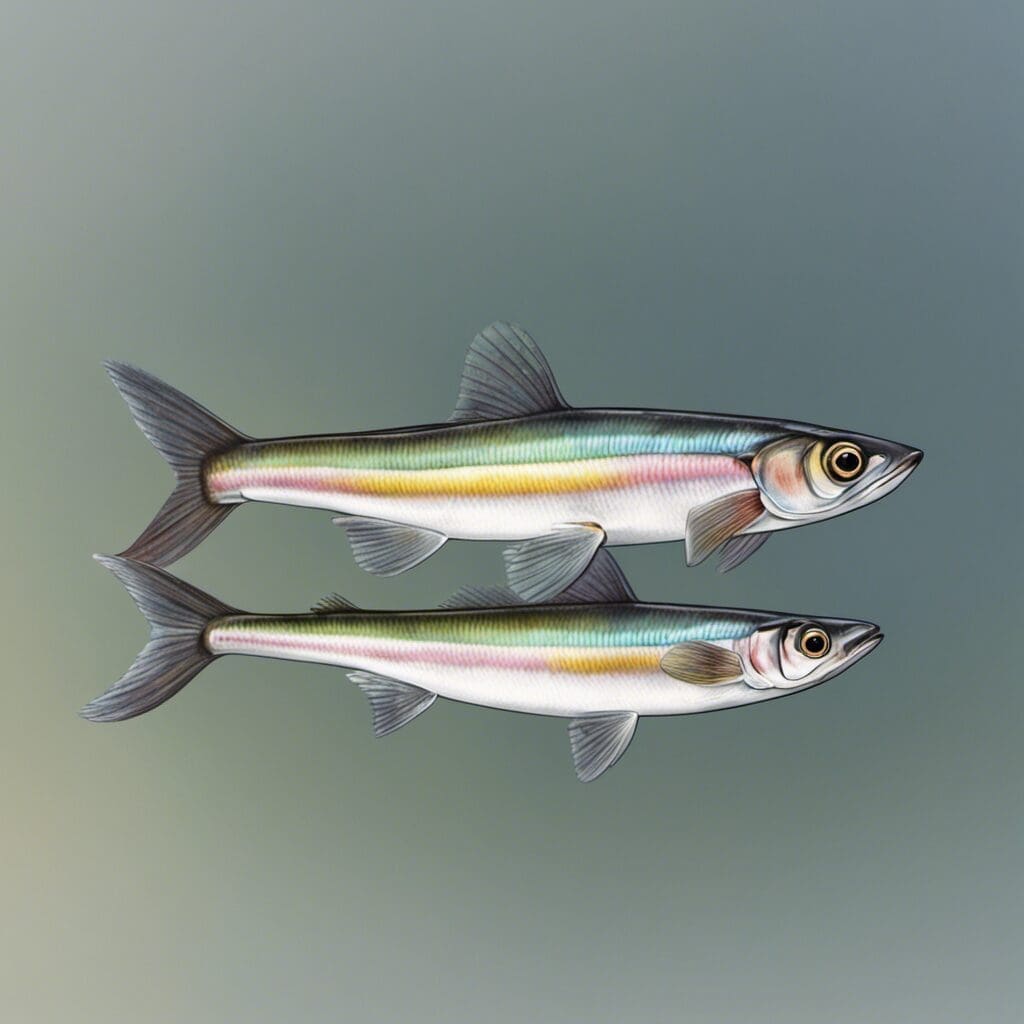Introduction
The Pacific Rainbow Smelt, scientifically known as Osmerus mordax dentex, is a small fish that belongs to the family Osmeridae.
Conservation Status
Currently, the Pacific Rainbow Smelt is not under any significant threat and is listed as ‘Least Concern’ on the conservation status rankings. Despite this, monitoring and efforts to sustain healthy populations and habitats are still critical.
Statistics
| Stats | Average | Range |
|---|---|---|
| Length | 16 cm | 10-20 cm |
| Weight | 20 g | 10-30 g |
| Average Lifespan | 3-4 years | N/A |
Distribution
Pacific Rainbow Smelt are found along the eastern outer coast of the Pacific, particularly in the northern regions. Their migration patterns include moving offshore in the winter and returning inshore for spawning during the spring.
Habitats
These species inhabit a wide range of water conditions, from fresh to brackish to marine. They are often found at depth ranges of 0-200 meters and can tolerate a vast range of water temperatures.
When and Where to See
The best time to spot Pacific Rainbow Smelt is during their spring spawning season. Early morning hours are considered optimal.
Best Fishing Locations
While specific popular locations are not identified, general tips to find Pacific Rainbow Smelt include looking for them in rivers and coastal areas during the spring season.
How to Catch
The preferred bait for Pacific Rainbow Smelt are tiny jigs, larvae, and minnows. Effective techniques range from jigging to bottom fishing. Night fishing during the spring season usually yields the best results.
Identification Guide
Pacific Rainbow Smelt are identifiable by their silver-blue bodies and rainbow reflections. They have a streamlined shape and can be differentiated from similar species by their unique jaw structures and tooth patterns.
Culinary
Pacific Rainbow Smelt offers a mild flavor with a light, smooth texture. They are rich in omega-3 fatty acids and low in mercury. They can be prepared pan-fried, baked, or even eaten raw in sushi.
Additional Information
These species have a nocturnal feeding habit, mainly feeding on zooplankton. Known predators include larger fishes, sea birds, and seals. Though there is no specific cultural significance, Pacific Rainbow Smelt play an important role in the food chain.
References and Further Reading
For further detailed information, head to sources like Fishbase, Encyclopedia of Life and the Alaska Department of Fish and Game. Always remember to respect local fishing regulations for a sustainable fishing experience.

